- City Fajr Shuruq Duhr Asr Magrib Isha
- Dubai 05:15 06:31 12:06 15:11 17:35 18:51

Photo: AFP
Indian officials are trying to find out if there are any casualties from Cyclone Fani, after one of the biggest storms to hit the eastern coast in decades tore through the state of Odhisha, causing heavy damage to infrastructure.
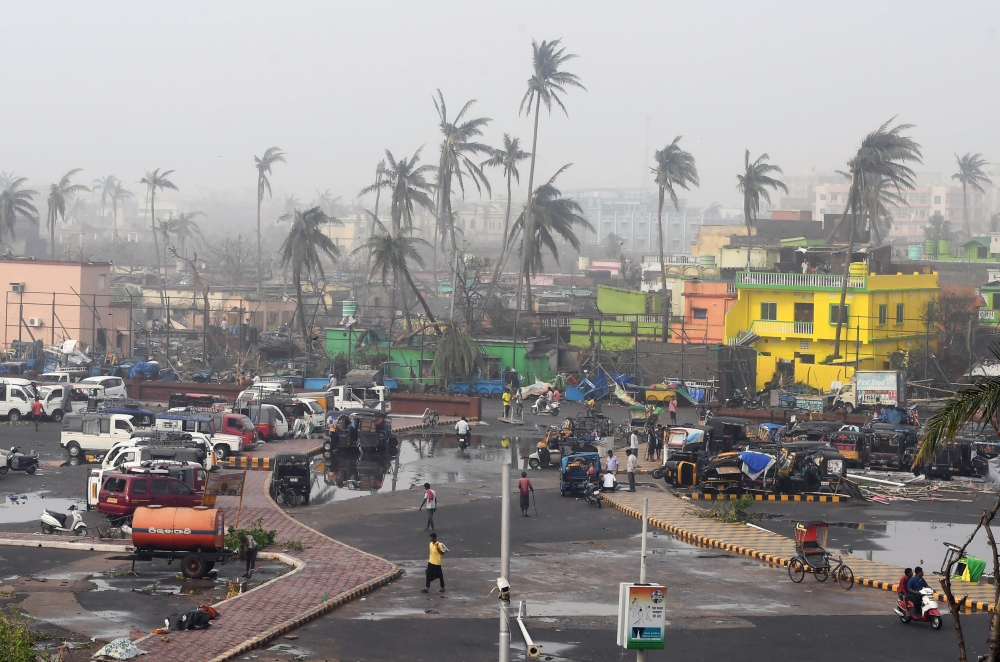
Randeep Kumar of the National Disaster Response Force says roads are blocked due to fallen trees on Saturday. Electrical posts are down causing power disruptions while water supply is also damaged.
The agency is still trying to gauge if there are any casualties.
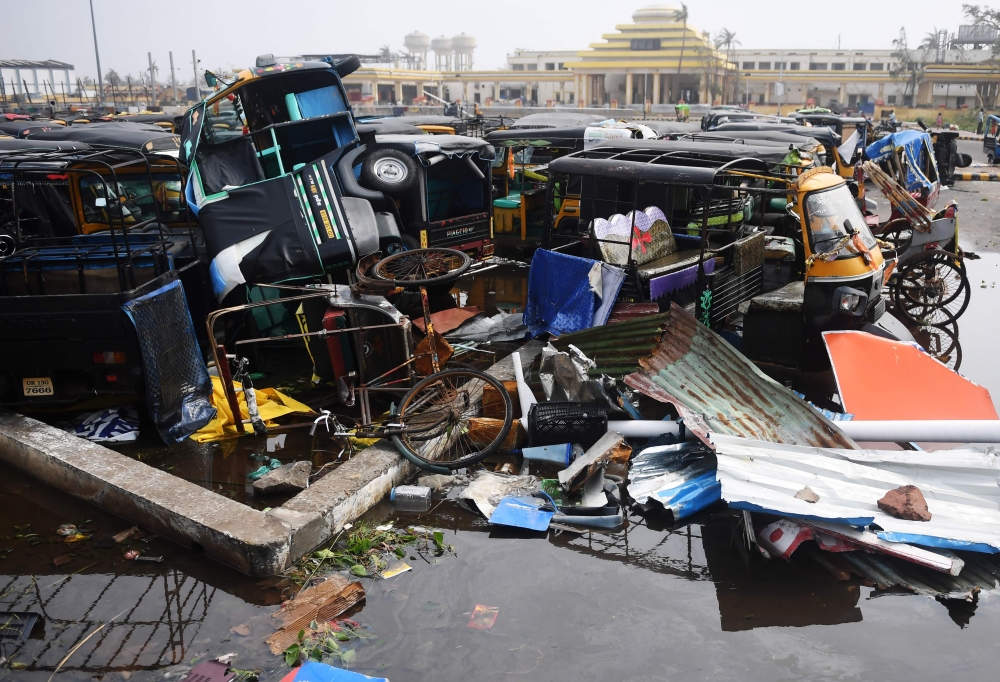
Mohammad Heidarzadei, an expert on storms and cyclones at Brunel University of London, says the cyclone packed sustained wind speed of 250 kilometers (155 miles) per hour when it hit land, placing it under Category 4.
He says it has now headed toward the India-Bangladesh border.
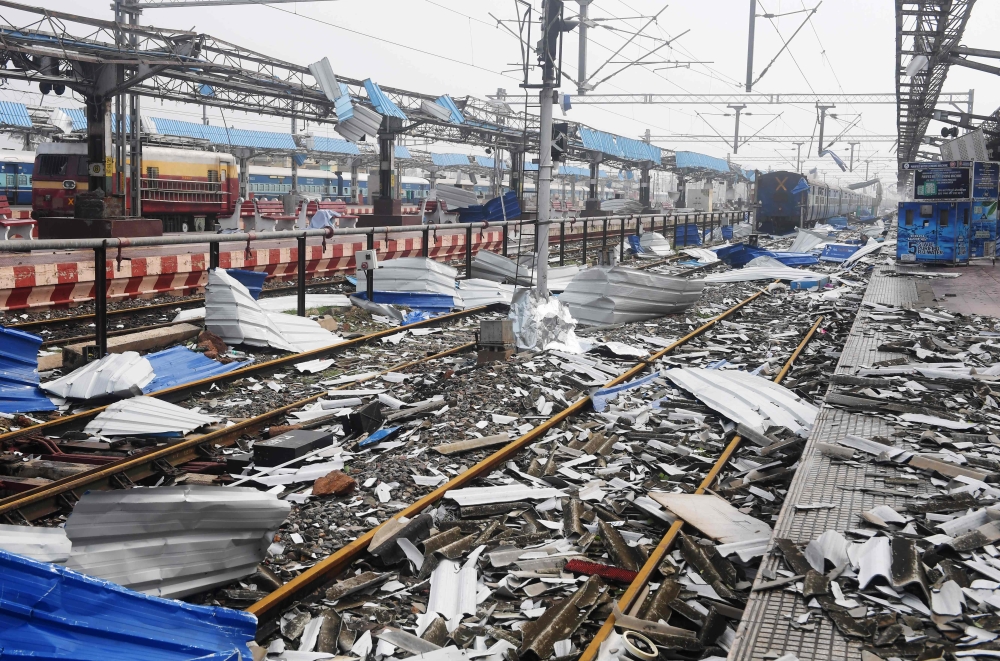
Photos: AFP
Two dead as monster cyclone batters eastern India
Two people died Friday after Cyclone Fani slammed into eastern India, officials said, as the storm sent coconut trees flying, blew away food stands and cut off power and water.
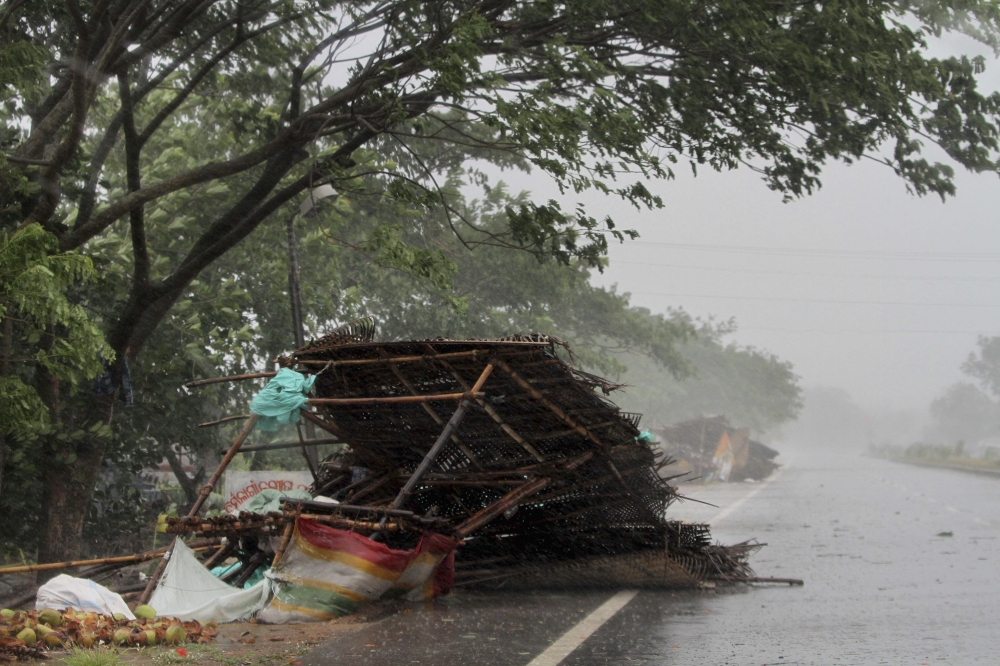
Photo: AP
The monster weather system, which made landfall at the eastern holy city of Puri in the morning, is one of the strongest to come in off the Indian Ocean in years, with winds gusting at speeds of up to 200 kilometres (125 miles) per hour.
Monster cyclone smashes eastern India
Cyclone Fani, one of the biggest storms to come off the Indian Ocean in recent years, slammed into India on Friday, tearing down trees, blowing away food stands and cutting off power and water.
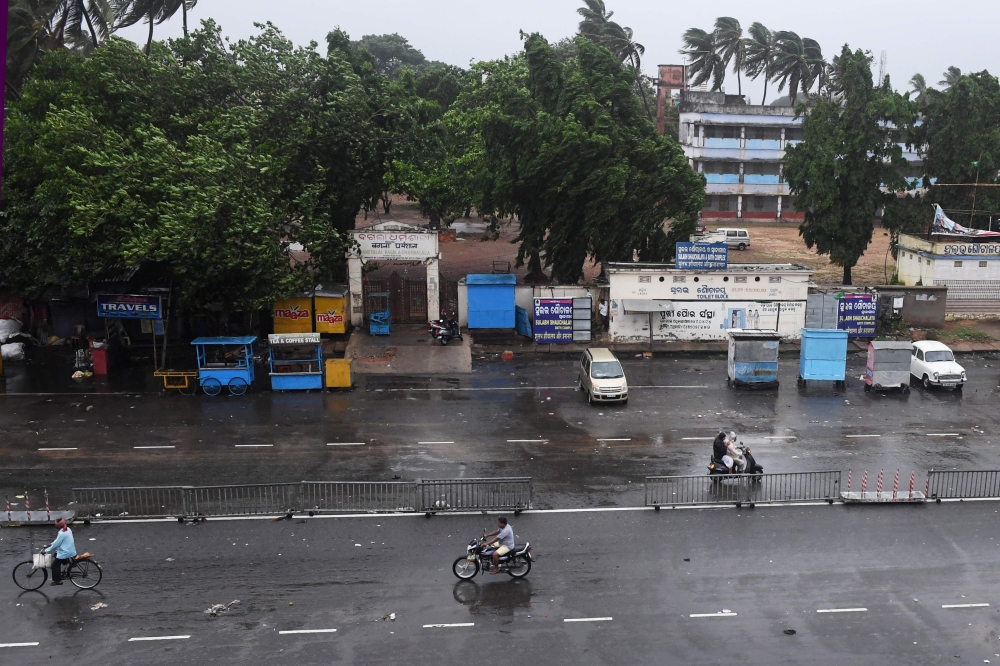
The monster weather system, which threatened to bring a dangerous storm surge that could flood low-lying areas, was packing winds of up to 180 kilometres (110 miles) an hour as it ripped into the country's east coast.
Forecasters say the areas could see gusts of up to 200 kilometres per hour, equivalent in strength to a Category 3 to 4 hurricane.
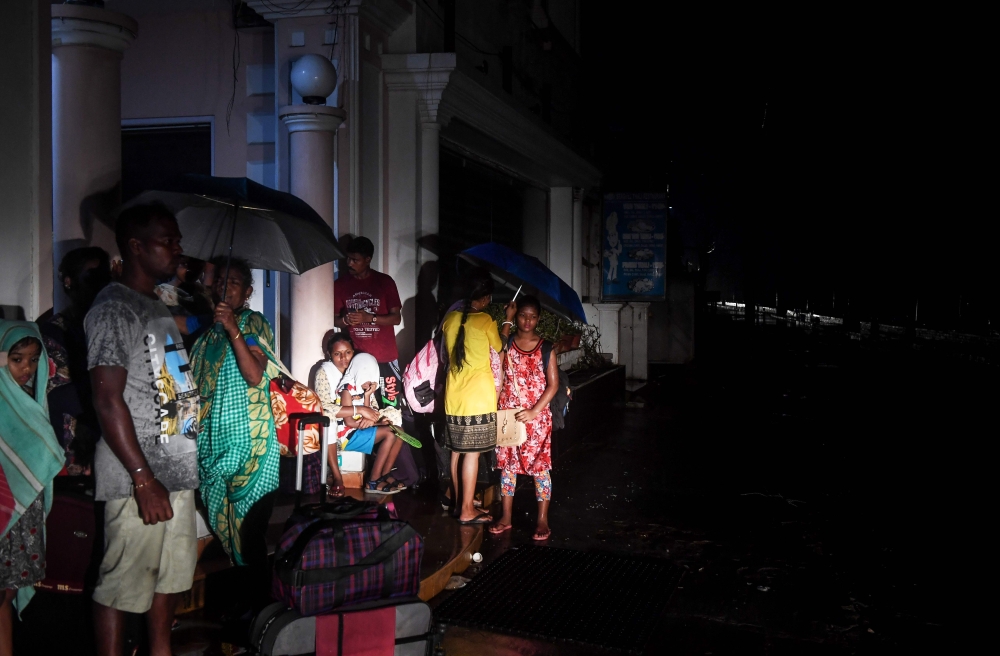
In recent days authorities in Odisha, where 10,000 people died in a 1999 cyclone, have evacuated more than a million people as they fret about a possible 1.5-metre (five-foot) storm surge.
Hundreds of thousands more people in West Bengal state have also been given orders to flee. Special teams were moving through holiday villages urging tourists to get to safety.
India's National Disaster Response Force shared images of several uprooted trees along the coast in Andhra Pradesh state to the south.
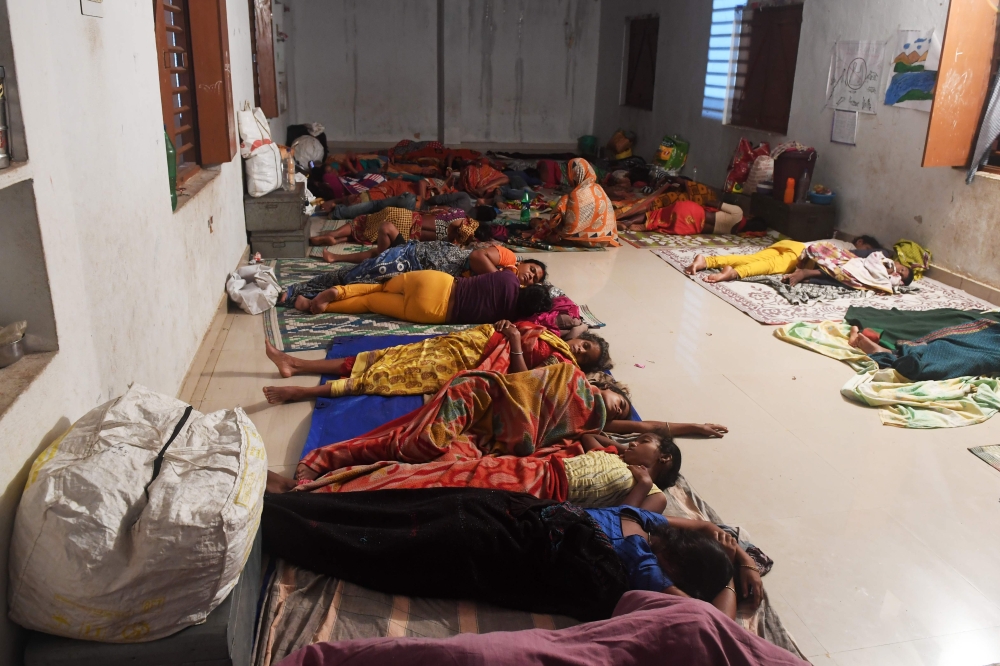
The NDRF teams were trying to remove the fallen trees and branches to ensure they don't become projectiles if the winds intensify.
Fani was expected to barrel northeastwards into West Bengal state and towards Bangladesh, on a trajectory that will take it over the homes of 100 million people.
'Total destruction'
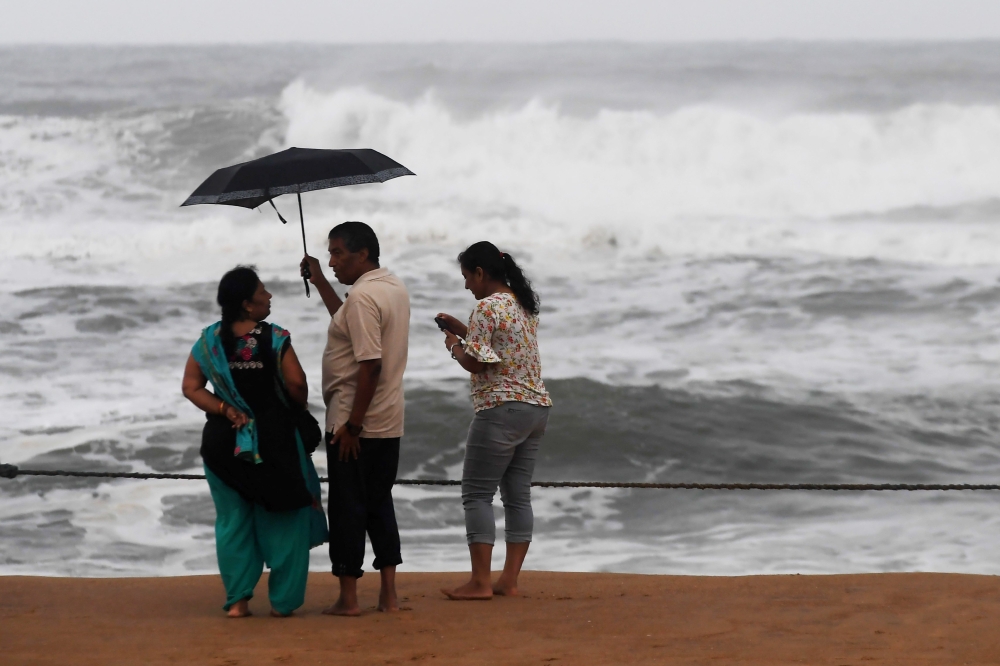
Photos: AFP
Meteorologists have warned of the "total destruction" of thatched houses, the uprooting of power and communication poles, the "flooding of escape routes" and damage to crops in some areas.
Some 3,000 shelters in schools and government buildings have been set up to accommodate more than a million people in Odisha. More than 100,000 dry food packets are ready to be dropped if needed, reports said.
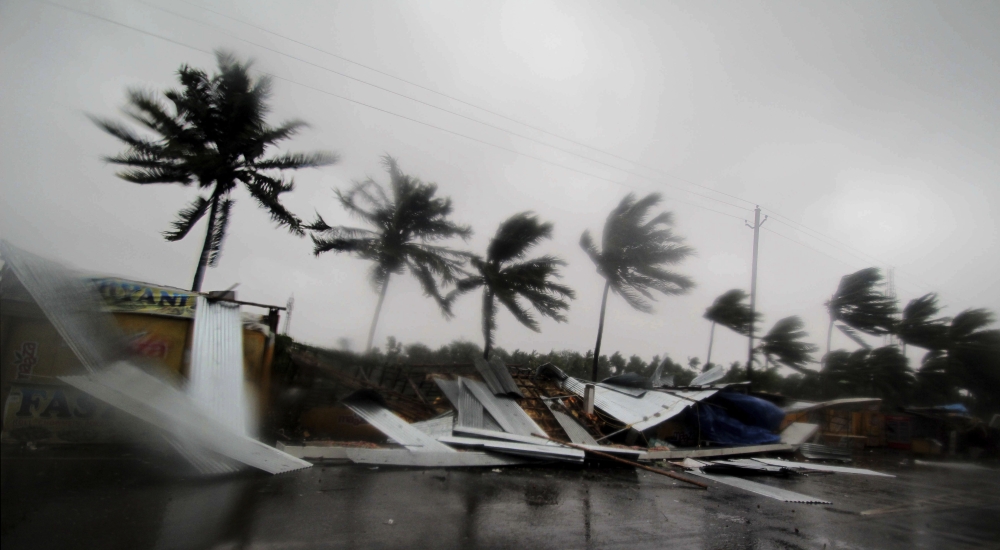
Photo: AP
More than 200 trains have been cancelled along coastal routes, according to Indian Railways. Three special trains were running however from Puri to evacuate pilgrims and tourists.
Flights have been cancelled in and out of Odisha's capital Bhubaneswar and Kolkata in West Bengal until at least Saturday.
Mass evacuations as monster cyclone heads for India
Nearly 800,000 people in eastern India have been evacuated ahead of a major cyclone packing winds gusting up to 200 kilometres (125 miles) per hour and torrential rains, officials said Thursday.
The Indian weather service said Extremely Severe Cyclonic Storm Fani should make landfall on Friday around noon (0630 GMT) in Odisha state and barrel north-northeastwards towards Bangladesh on a pathway that is home to more than 100 million people.
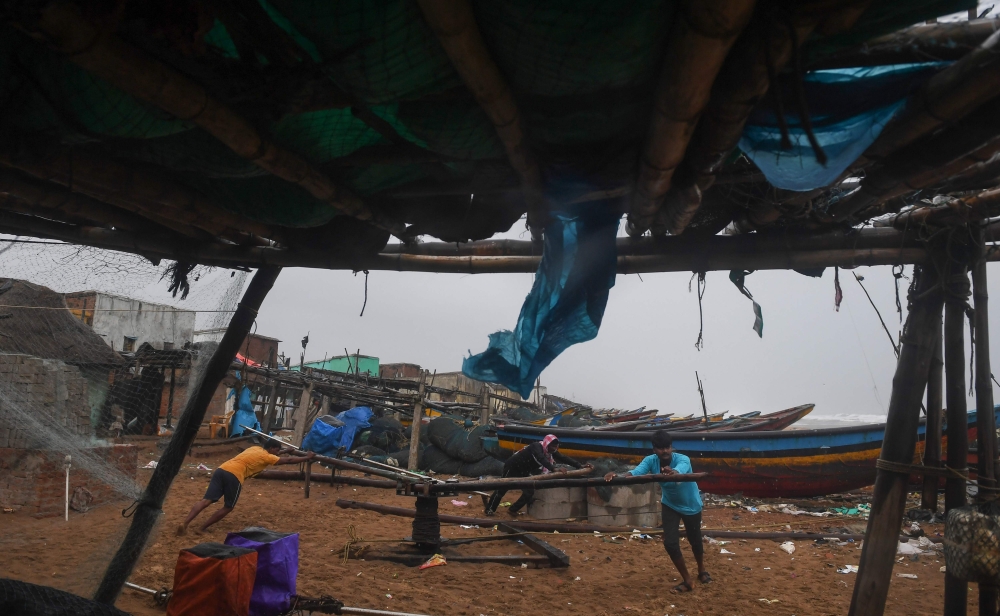
As it progresses into West Bengal state it should weaken gradually into a severe cyclonic storm with winds of 90-100 kph and gusts of 115 kph before entering Bangladesh as a cyclonic storm on Saturday evening with winds of 60-70 kph.
In Odisha on Friday, along with "extremely heavy" rainfall in places, a storm surge of about 1.5 metres (five feet) is "very likely" to inundate some low-lying areas, according to the Indian Meteorological Department.
A state relief department official told AFP that 780,000 people were moved to safer places overnight from at least 13 districts of Odisha, home to 46 million people, which will bear the brunt of the storm.
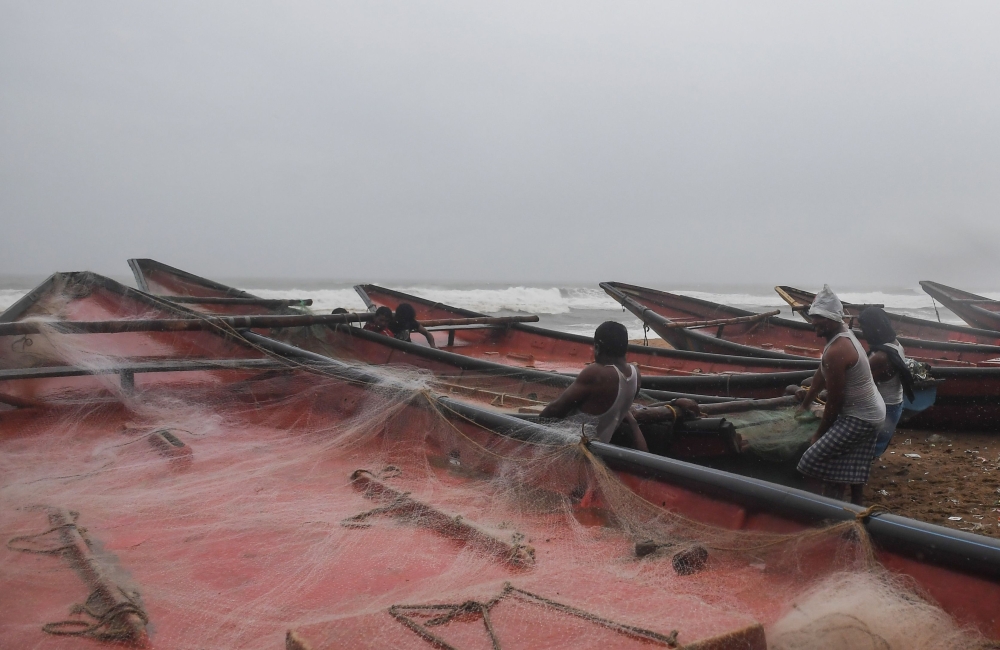
"We are expecting more than a million people to move out of the danger zone in next 12 hours," Bishnupada Sethi, Odisha Special Relief Commissioner, told AFP.
Some 3,000 shelters in schools and government buildings have been set up to accommodate more than a million people. More than 100,000 dry food packets are ready to be dropped if needed, reports said.
On Thursday the storm, which reports said was the biggest to hit eastern India in nearly two decades, was brewing in the Bay of Bengal and moving steadily and ominously towards land.
It was predicted to pack sustained wind speeds of 180-190 kph and gusts up to 200 kph, equivalent in strength to a Category 3 to 4 hurricane.
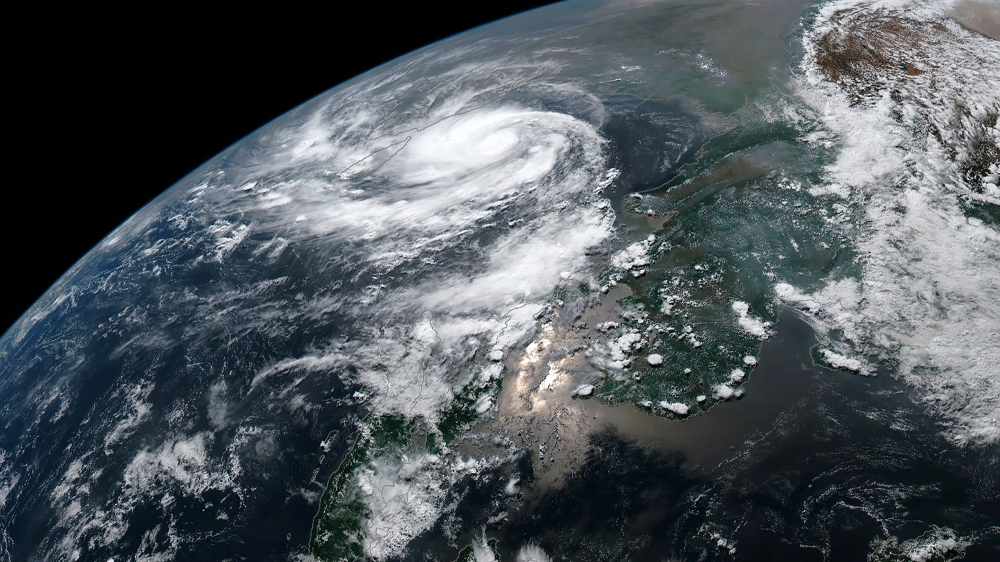
Photos: AFP
It was expected to make landfall near the Hindu holy town of Puri, a major tourist hotspot.
More than 100 trains have been cancelled in the past 48 hours, according to Indian Railways. Three special trains were running from Puri to evacuate pilgrims and tourists.
Flights have been cancelled in and out of Odisha's capital Bhubaneswar for 24 hours from midnight (1830 GMT).
Authorities have asked tourists to leave coastal areas and avoid unnecessary travel. Special buses have been deployed in Puri and other towns.
The management of one hotel in Puri visited by AFP as intermittent heavy rain fell outside had been told to vacate all 175 rooms, causing a wedding party to be cut short.
Dozens of officials were making announcements on hand-held megaphones across the coastal belt asking residents to leave their homes.
Fishermen have been advised not to venture out and the Indian Navy has also been put on alert.
India's biggest oil and gas producer ONGC has evacuated close to 500 employees from offshore installations and moved drilling rigs to safer locations, the Press Trust of India reported.
"Heavy rains are expected in all the coastal districts amid fears of flash floods. We are all geared up for the challenge," said Sethi.
780,000 evacuated in India ahead of major cyclone
Nearly 800,000 people in India's eastern coastal districts have been evacuated ahead of the expected arrival of a major cyclone packing winds of up to 200 kilometres (125 miles) per hour, officials said Thursday.
The Indian weather service said Extremely Severe Cyclonic Storm Fani is expected to make landfall on Friday afternoon near the Hindu holy town of Puri.
A state relief department official told AFP that 780,000 people were moved to safer places overnight from at least 13 districts of Odisha state that will bear the brunt of the powerful cyclone.
"More people are being moved to safer places," an official from the department told AFP.
Some 1,000 shelters in schools and government buildings have been set up to accommodate more than a million people.
On Thursday the storm, which reports said was the biggest to hit eastern India in nearly two decades, was brewing in the Bay of Bengal some 450 kilometres offshore and moving westwards.
The cyclone was expected to pack sustained wind speeds of 180-190 kmh, bringing gusts of up to 200 kmh, and is equivalent in strength to a Category 3 to 4 hurricane.
It will be the fourth such storm to hit the country's east coast in three decades.
India's weather office has warned that the high speed winds can uproot trees, flatten crops, damage homes, power and communication infrastructure along with flooding in low lying areas.
The neighbouring coastal states of Andhra Pradesh and Tamil Nadu have also been put on high alert.
Storms regularly hit eastern and southeastern India between April and December. In 2017, Cyclone Ockhi left nearly 250 people dead and more than 600 missing in Tamil Nadu and Kerala states.
Odisha had to evacuate some 300,000 people last October when its coastal districts were battered by cyclone Titli, with winds up to 150 kmh (95 miles) per hour and heavy rains.
India braces for cyclone, puts navy on alert
India deployed emergency personnel Wednesday and ordered the navy on standby as it braced for an extremely severe cyclonic storm barrelling towards the eastern coast.
Tropical Cyclone Fani, located in the Bay of Bengal and packing wind speeds up to 205 kilometres (127 miles) per hour, is expected to make landfall at Odisha state Friday.
Authorities have also ordered the evacuation of thousands of people from coastal districts likely to bear the brunt of the storm.
The neighbouring coastal states of Andhra Pradesh and Tamil Nadu states have also been put on a high alert.
India's National Disaster Management Authority (NDMA) said the sea conditions were "phenomenal" over the west-central Bay of Bengal area.
"Fishermen are advised not to venture into these areas," NDMA warned on Twitter.
The office of the state's special relief commissioner said local authorities had been told to identify "all vulnerable people... and shift them to multipurpose cyclone/flood shelters."
"Arrangements have already been made for free kitchen, safe drinking water, lighting, health and sanitation," it said in a statement.
Local media reports say there are over 850 shelters in the state that can accommodate around one million people.
H.R Biswas, director of the meteorological centre in state capital Bhubaneshwar, said at least 11 districts would be affected by severe rainfall.
"We have suggested people to stay indoors," he told reporters.
Coastal Puri town, some 62 kms (40 miles) from Bhubaneshwar, has also been put a high alert.
India's election commission has eased its restrictions in Odisha's coastal districts to allow the state authorities to carry out swift relief and rehabilitation work.
The rules, which apply during elections, suspend certain powers of the incumbent government to announce new schemes or take fresh administrative decisions.
Odisha, which has a population of around 46 million, has already voted in India's ongoing election, which started on April 11.
The seventh and final phase of voting will be held on May 19, with counting and results due May 23.
Odisha had to evacuate some 300,000 people last October when its coastal districts were battered by cyclone Titli, with winds up to 150 kms (95 miles) per hour and heavy rains.
At least two people were killed in the cyclone.
Storms regularly hit eastern and southeastern India between April and December. In 2017, Cyclone Ockhi left nearly 250 people dead in Tamil Nadu and Kerala states.
Odisha's worst-ever cyclone, in 1999, killed over 8,000 people.
![]() Follow Emirates 24|7 on Google News.
Follow Emirates 24|7 on Google News.